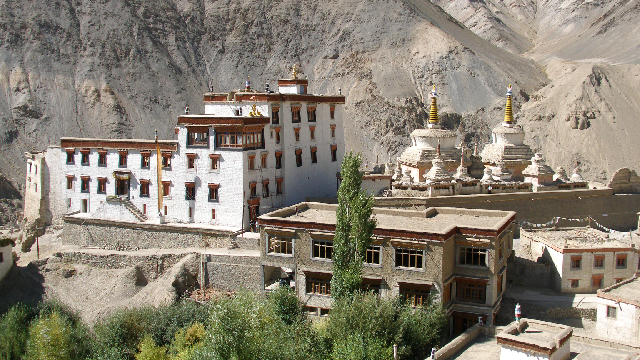Table of Contents
Toggle- Overview
- An Exploration of the History of Lamayuru Monastery
- Lamayuru Monastery Architecture: An Insight Into The Designing Of Tibetan Buddhists
- The Importance of Lamayuru Monastery in Tibetan Buddhism
- What Lamayuru offers under Spiritual Practices: Buddhism Practiced in its Most Authentic Form
- The Yuru Kabgyat Festival: A Distinctive Commemoration of Tibetan Heritage
- When to Go to Get the Most Out of Lamayuru Monastery
- Entry to Lamayuru Monastery
- Nearby Attractions and Activities
- Final Thoughts: Why Lamayuru Monastery Should Be on Your Bucket List
- How to book Ladakh tour online?
- People Also Ask
- What is Lamayuru Monastery?
- Where is Lamayuru Monastery located?
- What is the history of Lamayuru Monastery?
- What is the significance of Lamayuru Monastery in Buddhism?
- When is the best time to visit Lamayuru Monastery?
- How can I reach Lamayuru Monastery?
- What is the Yuru Kabgyat Festival?
- Can I stay at Lamayuru Monastery?
- What is the significance of the Moonland landscape around Lamayuru?
- Are there any other attractions near Lamayuru Monastery?
- Can I photograph inside Lamayuru Monastery?
- What is the architecture like at Lamayuru Monastery?
- Is Lamayuru Monastery open year-round?
- Are there any trekking routes around Lamayuru?
- What are the local customs I should follow while visiting Lamayuru Monastery?
- Is there any entry fee for Lamayuru Monastery?
- Can I attend a prayer session at Lamayuru Monastery?
- What type of accommodation is available near Lamayuru Monastery?
- How long should I spend at Lamayuru Monastery?
- What is the best way to explore Lamayuru Monastery?
- What is the altitude of Lamayuru Monastery?
- Are there any local markets or shops near Lamayuru?
- Is Lamayuru Monastery accessible for people with disabilities?
- Are there any restrictions on visiting Lamayuru Monastery?
- What is the cultural importance of Lamayuru Monastery?
- How do I prepare for a visit to Lamayuru Monastery?
- Can I do meditation at Lamayuru Monastery?
- What are the main rituals performed at Lamayuru Monastery?
- Inquiry Form
Overview
Perched dramatically on a cliff, Lamayuru Monastery is one of the oldest and most revered Buddhist monasteries in India. Capturing the attention of travelers and pilgrims for centuries, this ancient structure has beautiful sights to offer alongside rich historical and spiritual significance. Avid travelers as well as photographers looking for places to explore will find pleasure being at Lamayuru as it provides solace to those seeking to calm their minds while encircled by nature’s beauty while simultaneously soaking in the essence of Tibetan Buddhism.
This ultimate guide will provide all the details required in planning your trip. Alongside practical travel tips, it also contains detailed itineraries to help you achieve the best experience, interesting yet lesser-known facts about Lamayuru Monastery, and the history, architecture, as well as the spiritual value it holds.
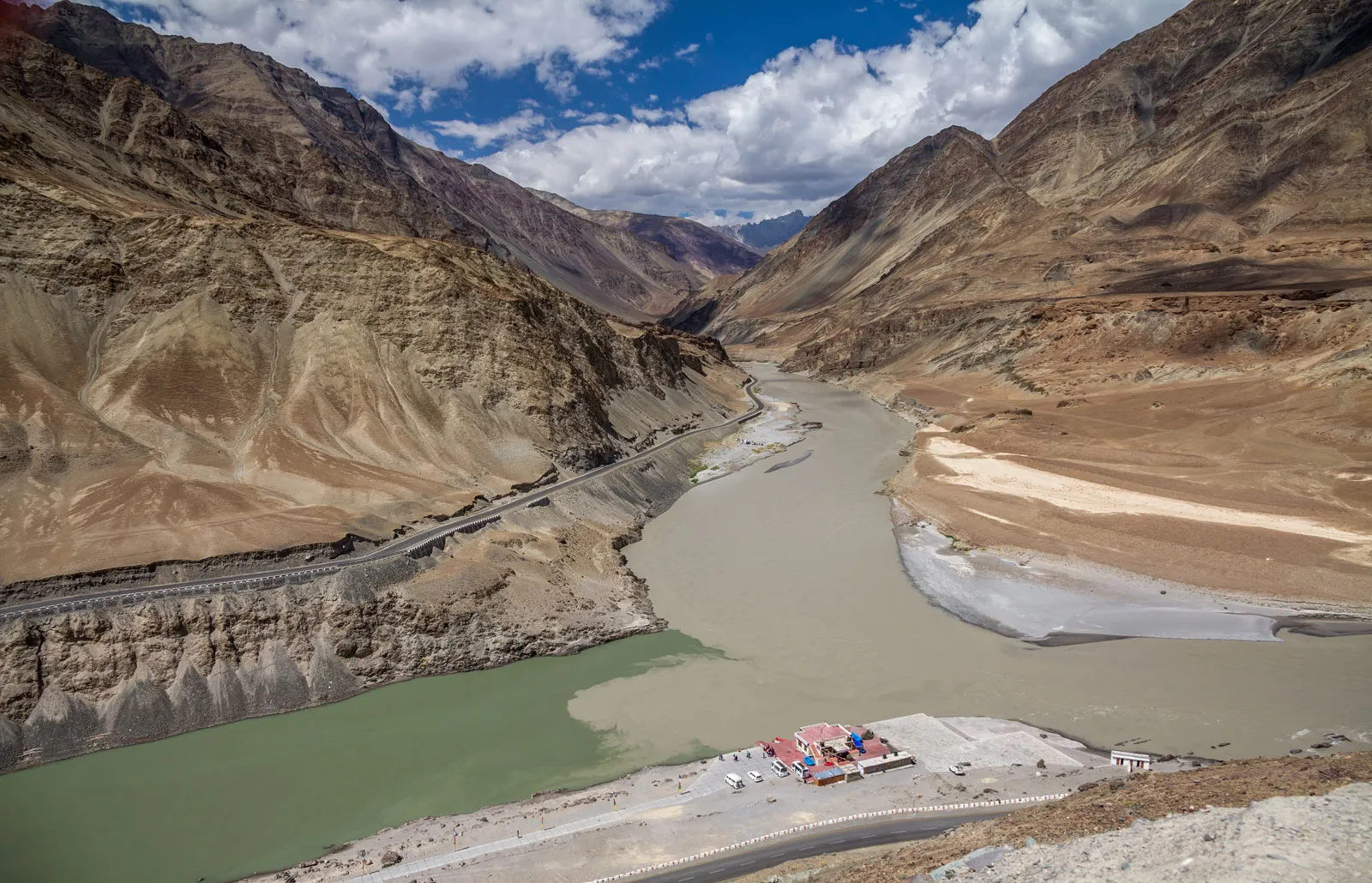
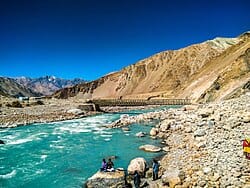

An Exploration of the History of Lamayuru Monastery
About Lamayuru Monastery
Misconceptions regarding its founding year aside, Lamayuru, or Yuru Gomp, as it is commonly known, captures the beauty of Buddhism. Believed to have been established by Naropa, this century-old gem is situated in Leh district and is a sight to behold for anyone traveling to the northern part of India as it is encapsulated in the region of Ladakh.
Lamayuru is said to have been a large lake where Naropa meditated turning it into land. This area gradually achieved sacred status around which this monastery was built. This legend further enhances the spiritual charm of Lamayuru, which has now become a site for those who want to experience the teachings of Buddhism in its untouched form.
Restoration and Maintenance
The monastery has experienced cycles of destruction and restoration. It was severely damaged by invading forces in the seventeenth century, but it was restored by local rulers as well as devoted monks. It is, however, in Tibetan and Ladakhi architecture. The restoration of these structures, with their rich Tibetan and Ladakhi influences, not only maintained their historic value, but also sustained the active use of the monastery for Buddhist education.
Today, Lamayuru Monastery is one of the oldest and most revered in Ladakh. Its importance is not only as a place of worship, but is regarded as a monument of hope, devotion and the preservation of rich culture rooted in Buddhism.
Lamayuru Monastery Architecture: An Insight Into The Designing Of Tibetan Buddhists
The Location: A Beauty Located At High Altitude
One of the most preferable features of Lamayuru Monastery is its breathtaking location. It lags on a 3,510 meters rocky mountain ridge and gives panoramic views of Moonland. With dry and desolate ares, the mountains surrounding the monastery reseambles to the surface of the moon which is the reason this place is referred to as “Moonland.” This surreal beauty makes the area more attractive and adds an otherwordly feeling to this place.
Layout Of The Monastery
The monestary is organized into temples, meditation halls and shrines alongside monk rooms which altogether make a complete monestary complex. This part of the monestary contains a prayer hall that is richly decorated with murals sculpting the Buddhas life and the different levels of enlightenment. The walls are bedecked with pious colors of religious paintings like the Bodhisattvas, Guru Rinpoche and many other Buddhism central deities. The paintings on the walls at Lamayuru are exceptional due to the fact they portray a unique style of ancient Tibetan art.
The Monastery Main Temple
The central part of the monastery is the main temple – ‘Du-Khang’ . Here, visitors can admire the stunning statue of Buddha along with Avalokiteshvara which is regarded the Bodhisattva of compassion. This treasured temple features a rich collection of invaluable Buddhist artifacts, including revered scriptures, ancient thangkas (cloth paintings) and statues. The beautifully carved wooden columns and vivid colorful frescoes truly make this part of the monastery noticeable.
The Monastic Living Quarters
Near the main temple are the monks’ quarters, which include meditation rooms. The decor is sparse but the rooms are quiet which allows for easy contemplation. There are about 150 monks living in the monastery, which is still maintained in the traditional way of Tibetan Buddhism. They perform daily rituals and teachings, which is the core fundamental of monastic living.
The Importance of Lamayuru Monastery in Tibetan Buddhism
The Lamayuru Monastery is known to belong to the Drukpa Kagyu sect which is one out of the four major schools of Tibetan Buddhism. The monastery is important in the religious life of the people in the area because it is both a place of worship and meditation. Monks from the monastery actively participate in religious functions throughout the year and provide religious teachings to the surrounding villagers and tourists.
What Lamayuru offers under Spiritual Practices: Buddhism Practiced in its Most Authentic Form
Meditation along with Daily Rituals
Meditation is one of the most fundamental practices at Lamayuru Monastery. Barre meditation is regarded as one of the routes towards enlightenment in Buddhism. Like other monks, those residing at Lamayuru take part in daily rituals which include prayers and mantra recitation. Morning sessions of worship are performed in a slow graceful manner. The large prayer bell and cymbals are rang while the monks sing.
As it has been noted, the visitors can participate in Buddhist prayers if they would like to, but essential manners like modest dress and not interrupting the monks must be followed. In a respectful manner, the monastery allows travelers to learn more about Buddhism and even interact with monks.
Lamayuru as a Pilgrimage Site
For monks and other Buddhists, Lamayuru is marked as one of the most revered places in Ladakh. Monastic pilgrims come to the monastery to perform their rituals and prayers, hoping for blessings and some sort of divine Progession. The history of the site along with its beauty makes it an ideal posture for meditation.
Among the remarkable monasteries, stupas, prayer wheel, and stone carving temples are part and parcel of Buddhism. Its beautifying the Math are open to these pilgrim visitors and anyone else who wants to admire and capture the spirituality that fills the air.
The Yuru Kabgyat Festival: A Distinctive Commemoration of Tibetan Heritage
You will be lucky enough to see the renowned Yuru Kabgyat Festival in Lamayuru around July, as it usually falls in the summer. This annual celebration is one of the most important festivals for the monks and the local people, marking the occasion with prayers, sacred dances, and rituals.
The monks perform Cham dances, which are traditional masked dances that depict overcoming evils and the restoration of virtue. These dances aren’t merely artistic interpretations but rather some reenactments grounded in Buddhist teachings, national history, and biographies of eminent personalities like Guru Rinpoche.
The masks that he monks put on converge the Tibetan Buddhist cultures, and the dances capture the imaginations of countless tourists and pilgrims who attend the event. This is indeed an unimaginable crossover of religion and art.
When to Go to Get the Most Out of Lamayuru Monastery
Best Season to Visit (June – September)
The best period to head to Lamayuru Monastery is in between June to September when summer is in full swing. During this period, the weather is relatively comfortable and warm, sitting at around 10°C to 25°C. This unquestionably promotes physical activities like Trithe trekking, photography and even sightseeing. This period also makes traveling by car easy as all roads are snow free. At the same time the nature is alive bursting forth in color.
Furthing the trip enhances the experience if you want to consider this period as a vacation by giving you the chance to witness the Yuru Kabgyat Festival.
Winter (October – March)
The blissful solitude might appeal to some who love winters, lamayuru shrinks in popularity during this blissful cold period and though winter in Ladakh does get extremely cold sitting at sub zero temperatures, It does provide a much needed escape from crowds. The lack of tourists makes Lamayuru during winters a still picturesque place ideal for those who are looking forward to submersing in spirituality. Emphasing this, access to the monastery is likely impossible due to icy roads and snow levels.
If your travels do take you in this period. Make sure you carry adequate heavy winter gear otherwise you will find yourself in knee deep trouble.
Entry to Lamayuru Monastery
By Road: The Picturesque Trip From Leh
The primary point of access to Lamayuru Monastery is via the road connecting it to Leh, which is the capital city of Ladakh. Leh is easily reachable by road from other important cities like Srinagar, and Manali, and there are several buses and taxis that travel between Leh and Lamayuru. The scenic drive from Leh to Lamayuru takes approximately 4 to 5 hours. Almost all travelers are spellbound by the stunning views of the valleys, mountains, and rivers offered during the trip.
The road from Leh to Lamayuru is dotted with some of the most picturesque landscapes and scenic locations in all of Ladakh and offers opportunistic stopovers at various scenic points along the way. The drive passes through the Indus River valley, and you can spot numerous small villages, monasteries, and one of a kind geographical formations such as the moonland hills.
By Air: The Closest Airport
The closest airport to Lamayuru Monastery is in Leh, which is around 120 kilometers from Lamayuru. Leh has its own airport with flights from major Indian cities such as New Delhi, Srinagar, and Jammu, with Air India and GoAir being some of the airlines servicing this route. After alighting from the flight in Leh, one can hire a taxi or rent a self-drive car from the airport to travel to Lamayuru.
By Bus: Another Feasible Way
For budget-friendly travelers looking to explore the exquisite monasteries in Leh, you have the option of taking a local bus which will cost you quite cheaply whereas the fare is quite reasonable for reaching the monastery. Although taking the bus may take 6 or 7 hours, if you want to take a road trip at the same time then this is the perfect option as it allows you to save money while still savoring the unparalleled beauty Ladakh has to offer.
Nearby Attractions and Activities
Alchi Monastery: A Spiritual Haven
Situated round 70 kilometers from Lamayuru, Alchi Monastery is an ancient Buddist sits that is well-known for its serene peaceful environment. In addtition, it is famous for its beautiful imagery and wooden scultures that were constructed in the 11th century. Considering the monastery as one of the most culturally significant monasteries in Ladakh, it is also a UNESCO sight on the world heritage list.
Magnetic Hill: Nature’s Mystery
Located around 30 kilometers away from Leh, Magnetic Hill is one of the most bewildering sites to see because when vehicles are put into neutral gear, they appear to roll uphill. This hill is well-known not only for this strange reason but also from the scientific aspect as it provides a good place to do tests. Furthermore, it adds as another attraction to would-be travelers in search of unexplored places to visit outside Lamayuru.
Nubra Valley: A Desert Oasis
If you are the avid traveler looking to visit Nubra Valley, you’d not be disappointed as it is located around 130km from Lamayuru. Nubra valley offers sand dunes, high-altitude deserts, alpine meadows, and best of all, camel rides. Not to forget the breathtaking views of the Karakoram range.
Zanskar Valley: A Trekker’s Paradise
Recognized for its untamed natural beauty and trekking routes, Zanskar Valley is one of the less-often explored areas of Ladakh. It suits everyone looking out for an adventurous getaway with activities like trekking, river rafting, and exploring distant Buddhist monasteries.
Final Thoughts: Why Lamayuru Monastery Should Be on Your Bucket List
Lamayuru Monastery is no ordinary religious place. It serves as an escapade, encapsulating ancient glorification of cultures, and a splendid travel spot. Be it memorable remaining festivals , the tranquil environment, or stunning monk devotion: Lamayuru monastery excels alongside all expectations.
Now it is time to head to Lamayuru as I formulate an itinerary for those grounded at the intersection of culture, seas of tranquility, and nature. You do not miss this unforgettable opportunity filled with experiences of a lifetime.
How to book Ladakh tour online?
Contact Brown Chinar at +91 6005039532/+91 9906188874 or Email us at : Enquiry@brownchinarkashmir.com
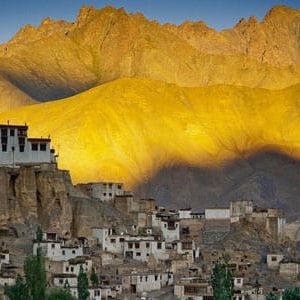
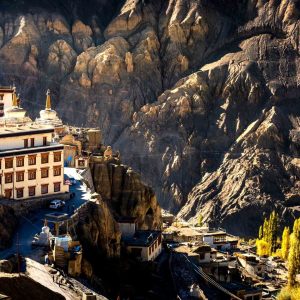
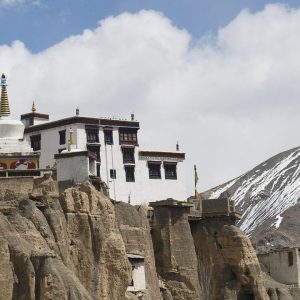
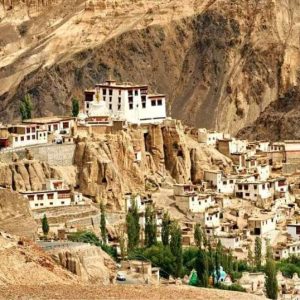

People Also Ask
What is Lamayuru Monastery?
Lamayuru Monastery, also known as Yuru Gompa, is one of the oldest and most significant Buddhist monasteries in Ladakh, India. It is situated at an altitude of 3,510 meters and is renowned for its stunning architecture, rich history, and spiritual significance. The monastery belongs to the Drukpa Kagyu sect of Tibetan Buddhism.
Where is Lamayuru Monastery located?
Lamayuru Monastery is located in the Ladakh region of northern India, around 120 kilometers west of Leh, the capital city of Ladakh. It is perched on a dramatic cliff with views of the surrounding barren landscape, often referred to as “Moonland.”
What is the history of Lamayuru Monastery?
The monastery was established in the 10th century, with legend suggesting it was once a lake that transformed into land after meditation by the Buddhist sage Naropa. Over time, the monastery has undergone several reconstructions and renovations, particularly after it was damaged during invasions in the 17th century.
What is the significance of Lamayuru Monastery in Buddhism?
Lamayuru Monastery is a highly revered site for Tibetan Buddhists, especially those following the Drukpa Kagyu sect. It serves as a center of religious study, meditation, and spiritual practice. The monastery is also a place for pilgrimage, attracting devotees from all over the world.
When is the best time to visit Lamayuru Monastery?
The best time to visit Lamayuru Monastery is between June and September, during the summer months when temperatures are moderate and the roads are accessible. The Yuru Kabgyat Festival in July is also a great time to experience the monastery’s vibrant cultural celebrations.
How can I reach Lamayuru Monastery?
The most common way to reach Lamayuru Monastery is by road from Leh. The journey takes around 4-5 hours, covering a distance of 120 kilometers. You can hire a taxi or rent a car. Leh is also connected by air to major cities like Delhi, making it easier for visitors to reach.
What is the Yuru Kabgyat Festival?
The Yuru Kabgyat Festival is an annual celebration held at Lamayuru Monastery, usually in July. It features traditional Cham dances, in which monks perform masked dances depicting Buddhist teachings and historical events. The festival is a vibrant and colorful celebration of Tibetan culture.
Can I stay at Lamayuru Monastery?
While there are no formal accommodations directly within the monastery, visitors can stay in nearby guesthouses or campsites. There are also several small hotels and homestays in the vicinity of the monastery for a more comfortable stay.
What is the significance of the Moonland landscape around Lamayuru?
The surrounding landscape of Lamayuru, known as Moonland, features rugged terrain that resembles the surface of the moon, with barren hills and rock formations. This otherworldly landscape adds a mystical charm to the monastery and contributes to its spiritual atmosphere.
Are there any other attractions near Lamayuru Monastery?
Yes, there are several nearby attractions, including Alchi Monastery, Magnetic Hill, Zanskar Valley, and Nubra Valley, all of which are worth exploring. These destinations offer a mix of cultural experiences, adventure activities, and stunning landscapes.
Can I photograph inside Lamayuru Monastery?
Photography is generally allowed in the monastery, but visitors should always ask for permission before taking photos inside the temples or shrines, especially if they involve sacred objects or practices. Be respectful of the monks and the spiritual environment.
What is the architecture like at Lamayuru Monastery?
Lamayuru Monastery’s architecture is a beautiful blend of Tibetan and Ladakhi styles. The monastery consists of several shrines, temples, and meditation halls. The walls are adorned with intricate murals and frescoes depicting Buddhist deities, and the buildings are perched on a cliff offering stunning panoramic views of the valley below.
Is Lamayuru Monastery open year-round?
Yes, Lamayuru Monastery is open year-round. However, the best time to visit is during the summer months when the weather is more favorable for outdoor exploration. Winters can be harsh, with freezing temperatures and snow, but the monastery can still be visited if you are well-prepared for the cold.
Are there any trekking routes around Lamayuru?
Yes, there are several trekking routes around Lamayuru, including treks to Zanskar Valley and the Indus Valley. These routes offer opportunities to explore the rugged beauty of Ladakh and experience its unique culture up close. You can also trek from Lamayuru to Alchi Monastery for a more adventurous experience.
What are the local customs I should follow while visiting Lamayuru Monastery?
When visiting Lamayuru Monastery, it’s important to respect local customs. Dress modestly, covering your arms and legs, and always ask for permission before entering private or sacred areas. Visitors should also avoid speaking loudly or disrupting the monks during their prayers and meditation.
Is there any entry fee for Lamayuru Monastery?
No, there is no entry fee for visiting Lamayuru Monastery. However, visitors may be encouraged to donate for the upkeep of the monastery. Donations are typically voluntary and can help support the monks and their religious activities.
Can I attend a prayer session at Lamayuru Monastery?
Yes, visitors can attend prayer sessions at the monastery, though it’s important to be respectful and quiet during these times. It’s advised to dress modestly and follow any specific instructions given by the monks or temple staff.
What type of accommodation is available near Lamayuru Monastery?
There are various types of accommodation options near Lamayuru Monastery, including guesthouses, hotels, and homestays. Many travelers opt for guesthouses that offer basic amenities and a chance to experience local hospitality. Some visitors also choose camping, as the area offers beautiful natural surroundings.
How long should I spend at Lamayuru Monastery?
The amount of time you spend at Lamayuru Monastery depends on your interests. If you’re just visiting for the scenic beauty and a short exploration, a couple of hours may suffice. However, if you’re interested in Buddhist teachings, meditation, or attending the Yuru Kabgyat Festival, you may want to spend a day or two in the area.
What is the best way to explore Lamayuru Monastery?
The best way to explore Lamayuru Monastery is on foot. Wander through its sacred spaces, including the main temple, prayer halls, and meditation areas. Don’t forget to take in the stunning views of the surrounding valleys and barren mountains.
What is the altitude of Lamayuru Monastery?
Lamayuru Monastery is located at an altitude of 3,510 meters (11,516 feet) above sea level. Visitors should be mindful of the altitude and acclimatize properly before visiting to avoid altitude sickness.
Are there any local markets or shops near Lamayuru?
While Lamayuru itself is quite remote, you can find small shops and local markets where you can buy traditional Ladakhi handicrafts, Buddhist artifacts, and souvenirs. These markets are ideal for picking up unique mementos of your visit.
Is Lamayuru Monastery accessible for people with disabilities?
Lamayuru Monastery is located on a rocky cliff, and the terrain can be challenging, with stairs and steep paths. It may be difficult for people with mobility issues to access the monastery, but with the help of local guides, it might be possible to explore the more accessible areas.
Are there any restrictions on visiting Lamayuru Monastery?
There are no significant restrictions on visiting Lamayuru Monastery, but visitors should follow the rules set by the monastery, including respecting the monks and their religious practices. Always ask for permission before entering sacred spaces and avoid disturbing the spiritual activities of the monks.
What is the cultural importance of Lamayuru Monastery?
Lamayuru Monastery holds significant cultural importance for the people of Ladakh and the larger Buddhist community. It is a center of Buddhist learning and practice and is integral to the religious and cultural identity of the region. The monastery’s rituals, festivals, and teachings have influenced local customs and spirituality.
How do I prepare for a visit to Lamayuru Monastery?
When preparing for a visit to Lamayuru Monastery, make sure to pack appropriate clothing for the weather, including warm layers, especially if visiting in the colder months. If you’re trekking, sturdy shoes and a hat are essential. Acclimatize to the high altitude, drink plenty of water, and carry sunscreen to protect against the sun’s intense rays at high altitudes.
Can I do meditation at Lamayuru Monastery?
Yes, meditation is an integral part of life at Lamayuru Monastery, and visitors can take part in meditation sessions, either informally or through organized programs. It’s a great opportunity for spiritual reflection, and the tranquil environment provides an ideal setting for inner peace.
What are the main rituals performed at Lamayuru Monastery?
At Lamayuru Monastery, the monks perform daily rituals, including prayers, mantra recitations, and pujas (ritual offerings). The annual Yuru Kabgyat Festival features traditional Cham dances, which are symbolic performances based on Buddhist mythology and teachings.

